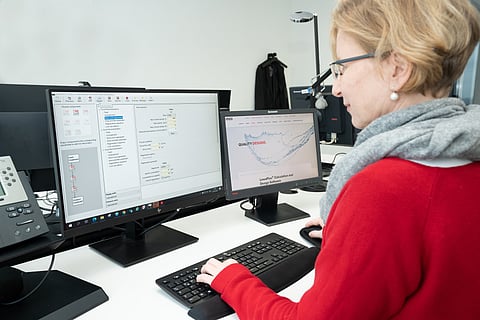LANXESS Expands Lewaplus Calculation Tool
The specialty chemicals company LANXESS has added another function for the food industry to its LewaPlus design software. This enables the dimensioning of ion exchange systems including a number of special process configurations that can be optimally achieved with Lewatit types specially developed for food applications. This addition covering the calculation of demineralization systems for aqueous gelatin and collagen solutions is fully integrated in the software’s food module, regularly updated and available right now. There will be no charge for using the software nor for participating in a webinar series that LANXESS will be offering in July 2023 for training purposes. Rolled out more than ten years ago, LewaPlus is a highly intuitive and comprehensive tool aiding in the planning and design of industrial water treatment facilities with ion exchange and membrane systems.
“Lewatit users can now monitor the performance of existing gelatin and collagen demineralization systems in a user-friendly and practical manner and also design new systems. LewaPlus helps our customers to reduce waste, chemicals and water consumption – all aspects that are becoming ever more important,” says Dr. Nadja Hermsdorf, Technical Marketing Manager in the Liquid Purification Technologies (LPT) business unit at LANXESS.
Dimensioning of systems for treating gelatin and collagen solutions
Many gelatin producers are looking to expand their product portfolio in order to cater to the latest market trends. Collagen is in high demand, and the number of providers is increasing all the time. And there’s one question that’s becoming more and more important: Which collagen offers the best quality? Since collagen – or, more precisely, water-soluble collagen hydrolysate – is obtained from, among other things, porcine and bovine skin and bones, it is essential that it undergoes purification (e.g. with ion exchange resins).
Not only does the use of existing gelatin ion exchange systems for treating collagen require modifications to the different process steps, but it may sometimes also be necessary to expand these systems with a new ion exchange filter. In systems for treating gelatin and collagen, the regeneration and rinsing steps needed for the operation of ion exchange resins are very similar. One area where they differ significantly, however, is in the quantity of ion exchange resins used, which governs above all their water and chemical consumption. LewaPlus is the first-ever design software for the industrial treatment of aqueous gelatin and collagen solutions. The new module allows each individual step to be dimensioned in a specific way, making it possible for the first time ever to calculate the quantities of water and chemicals actually needed.
Collagen is the primary building block of skin and connective tissue. The protein is produced by the organism itself. The supposed benefits of taking collagen products on a regular basis – smooth skin, shiny hair and strong nails – are heavily promoted.
LANXESS, too, is following market demand and, with this new function in the LewaPlus food module, offering its customers a quick and efficient way of modifying their systems accordingly.
“The intention is to add more features and functions to LewaPlus in the future. We’re planning to support system design for even more food industry products, such as liquid sugar, thin beet sugar juice and basically all components of food and drink that are treated with ion exchange resins in order to significantly enhance product quality and meet market demands,” says Hermsdorf.
Costs at a glance
The software features a cost calculation tool for determining the investment and operating costs of a production facility for treating gelatin and collagen solutions. The investment costs include expenses for installing the system and procuring the ion exchange resins. The operating costs comprise expenditure on regeneration, water consumption and wastewater disposal. A cost forecast helps users to estimate the expenses over the course of the system’s planned total service life (total cost of ownership, TCO).
Optimization of existing ion exchange systems
The new software function also allows users to check the cost-effectiveness of existing gelatin and collagen treatment systems. As a result, LANXESS is offering the first software solution on the market that enables users to estimate the optimal use of ion exchange resins for the highest possible quality of gelatin and collagen. Producers can also identify potential savings in the operating costs.
The properties of gelatin and collagen solutions are subject to major fluctuations in terms of not only salt content and composition but also color, taste and smell. “With existing systems, we often find that the ion exchange capacity could be better utilized and that there is also potential for improvement when it comes to water and chemical consumption,” says Hermsdorf. “After all, sustainability assessments and the reduction of operating costs are playing an increasingly important role.”

